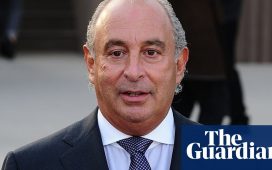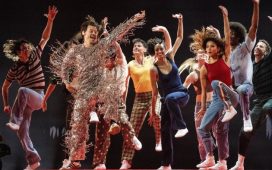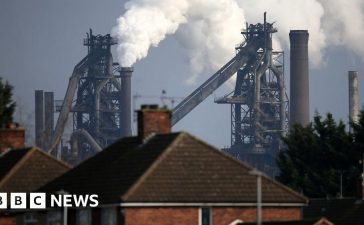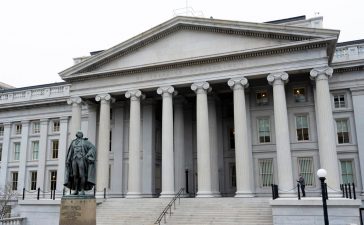I have vivid memories of the day Jimmy Savile died: 29 October 2011, the day before my 41st birthday and two days before he would have turned 85. According to him, the proximity of our birthdays was significant: he was “full warlock”, having been a Halloween baby, whereas I was only half.
I had spent the previous seven years interviewing Savile at his homes in Leeds and Scarborough, in cafes and on seafronts, at the Athenaeum Club in London and even aboard the QE2. Since 2004, I had quizzed him about his colourful life, his role in pivotal moments in the story of postwar British culture, the extraordinary circles of influence that he had moved in.
It was a journey that began as a nine-year-old boy at the recording of an episode of Jim’ll Fix It. Like every other child in the studio audience that evening, I had gone expecting to witness magic. What I left with was an unwanted insight into the unvarnished reality of pre-recorded television, and a strange ambivalence about the show’s host.

There was a suggestion of menace in his manner. For someone that every kid from that era felt as if they knew, Savile came across to me as remote, cold and unapproachable. These feelings were reawakened as a teenager when I read his autobiography. I was struck by his evangelical zeal, his fascination with death, his all-consuming obsession with money and the frequent references to his encounters with teenage girls, inevitably followed by cheerful accounts of how he had made narrow escapes from suspicious parents.
As an adult, I was sent to interview him for a magazine in 2004. The interview, which took place at his penthouse flat in Leeds, lasted well into the night.
What I reported led to further, increasingly bizarre magazine profiles. He regaled me with details of the more unlikely aspects of his career: his papal knighthood, his status as a “Special Friend of Israel”, his highly influential role at Broadmoor hospital, the power he exerted within the BBC and his very personal relationships with Prince Charles, Diana, Princess of Wales and Margaret Thatcher.
The interviews began to last for days, not hours. He invited me to stay with him and, on one occasion, I was afforded the “honour” of sleeping in the bedroom he kept as a shrine to his mother, Agnes, who he referred to as “the Duchess”. The room, with its tiny single bed and cupboard filled with her clothes, draped in polythene covers, was a capsule representing what ultimately mattered to Savile.
Agnes Savile exerted an extraordinary hold over her seventh and youngest child. In his answer to my very first question, he described himself as “a not-again child”, because he was unplanned and, very possibly, unloved. His mother’s approval was of enormous significance to Savile, in life and, I believe, well beyond her death in 1972.
As the years went by, it began to feel as if I was serving a purpose for him. Through these long-form articles, I was blowing on the flickering embers of his celebrity, providing the oxygen of publicity at a time when he was fast becoming an increasingly sinister relic.

What crystallised through this process, however, was a determination to go further than magazine articles; I wanted to write a book about how and why one of Britain’s most recognisable men was one of its least known.
At first, he was fiercely resistant to the idea, claiming that he had written his own autobiography only because he’d got wind that a journalist was planning an unauthorised life story. Controlling the narrative was paramount. Over time, though, he started to come around to the idea, as long as he could, in his words, “correct everything” that I’d got wrong.
Such an approach would have ensured a black line through the dark rumours that swirled, despite the status he had assiduously burnished as a charity fundraiser, confidant of rock stars and royalty, popes and prime ministers. I pressed him on the whispers and innuendo in every interview we did. His variety of rebuttals always seemed to start from a position of guilt.
“I have a phrase when someone puts a story in a tabloid about underage sex,” he once told me. “I say: ‘It would be a lot worse if it was true.’ They say: ‘Are you saying it’s not true?’ I say: ‘I’m not saying nothing, but it would be a lot worse if it was true.’ Of course it’s not bastard true.”
Having trawled the archives of every national newspaper for references to Savile, I never once found a story that alleged he had had sex with minors. We now know that this was not because journalists and the police did not suspect, or even have evidence in some cases; it was because Savile was highly litigious and extremely well connected.
On another occasion at his flat in Leeds, he broke off our interview to take a telephone call. A scandal had erupted around historic abuse at the Haut de la Garenne children’s home in Jersey, which Savile had visited in the early 1970s. A photograph had emerged of him at the home, surrounded by kids. Throughout the call, which, it was made clear, was with his lawyers, he never once stopped looking at me.
After he put the phone down, he showed me the letter his legal team had prepared for the publication in question, and reiterated how much money he had made from suing newspapers. I put it to him that he had spent the best part of 50 years in the media spotlight and never been the subject of so much as a kiss’n’tell. Why, given this spotless record, were the tabloids so intent on hunting him?
“How the hell should I know?” he grunted. “The only thing you can expect from pigs is shit.” I will never know for sure whether he was actually speaking to his lawyers or had stage-managed the episode as a warning to me.
Late on the night of our last ever interview, almost a year before his death, Savile was slumped in his armchair, sucking on a giant cigar and drinking a succession of double whiskies. He maintained that he had only started drinking alcohol after his quadruple heart bypass in 1997. Perhaps it was the scotch, but he was in an unusually reflective mood, troubled even, when he suddenly launched into a bitter and totally unsolicited diatribe about the conviction of Gary Glitter.
He was adamant that the glam rock star, real name Paul Gadd, had done nothing wrong beyond having “a few dirty pictures” on his personal computer. Savile proceeded to lay the blame for Glitter’s demise squarely with the press.
I countered that the singer had, in fact, been convicted and imprisoned for a series of sexual abuse charges involving minors. We were seated in the front room that overlooked Scarborough Bay. That was where I left him. But Savile did not leave me.

Feeling deeply uncomfortable about what he had said, I decided that I needed to distance myself from him and the well-polished stories he told, shaped and fitted around his narrative. Instead, I would start finding and talking to people that knew or encountered Savile in the many different compartments of his mysterious life.
The plan was to track down as many of them as possible and work my way in, gradually breaching the impenetrable facade that he had erected around himself. What I hoped this would result in was a final, climactic meeting in which I would confront him with what they, rather than he, had told me. His death robbed me of that opportunity.
When the news broke I felt ashamed that I’d been unaware he’d even been ill. My wife had organised a surprise birthday party for me in a pub near our home in London. My friends were there waiting for me, but I was in no mood for socialising. Savile’s passing provoked such a storm of conflicting emotions that I cried tears of frustration, anger and, I’ll admit it, sorrow.
Spending so much time in Savile’s company was like being in a hall of mirrors. I was never quite sure of where I stood or what I believed. The rumours were so persistent, and he was so brazen about the “fun” he’d had with youngsters during his years as a pied piper for the nascent pop generation, a fixer of dreams and a latter-day saint, and yet he had never been exposed.
I was sure that his evasiveness, his refusal to be known, was connected to the darkness that seemed to emanate from him. But while it proved impossible to access its source, and none of his victims had been heard, I was left only with conjecture.
He often boasted to me of his hard-man antics as a dancehall manager in Manchester and Leeds during the 1950s and early 60s, talking with relish about the violence his bouncers inflicted on troublemakers, and the fact that local police officers were firmly in his pocket. Could it be that Savile had been responsible for someone’s death, that a beating meted out in the back room in a provincial nightclub had gone too far? It was one theory of many.
Oddness was a badge that he wore with pride. He was also capable of kindness, although his motives for such acts are now hard to fathom. He could be charming one minute and as blunt as an anvil the next. His idea of humour remained firmly at odds with the 21st century, and he never, ever laughed at himself. At times it was as difficult to smile weakly at his punchlines as it was to breathe under the low-hanging cloud of cigar smoke that enveloped him.
Our interviews were wide-ranging, but there were certain avenues of conversation that he always shut off. One was his father, Vincent. Another was his siblings. I later discovered that Johnny, one of two older brothers, was sacked from Springfield psychiatric hospital in London on grounds of gross misconduct. He’d sexually assaulted a female patient.
In the aftermath of his exposure, Savile’s nephew, Guy Marsden, told me about how, as a teenager in the late 1960s, he had run away to London with some friends. They had been picked up at Euston station by a stranger and taken to a house nearby. A few days later, Savile came to the house and did not act in the least bit surprised to see his sister’s son. Savile moved his nephew and friends into another flat, taking them to parties attended only by children and men. Marsden said his own father, Herbert, hated Savile. Guy also believes that Savile was responsible for getting him a term in borstal.
The book I wrote, In Plain Sight: The Life and Lies of Jimmy Savile, was a very different story to the one I had struggled with for so long; the one that felt like a millstone around my neck while he continued to lead me on, hinting at what existed beyond the clownish persona without ever revealing the truth.
It took until almost a year after his death for the facade that he had built, and protected so fiercely, to crumble to dust. It did so under an onslaught of testimonies from people he had abused.
The first were interviewed by Meirion Jones and the late Liz MacKean of Newsnight, not long after Savile’s three-day, quasi-state funeral, which I attended. Their investigation was shelved by the BBC.
The dam finally broke when an ITV documentary aired in early October the following year, featuring survivors of his abuse. In the time that had elapsed since his death, I had spoken with many more people than I would have been able to while he was alive.
The reason for this is that Savile compartmentalised his life, keeping the people he knew, influenced and abused as far away from each other as possible. What emerged from these conversations was a picture of the real Jimmy Savile. It depicted the very thing that he’d had so many different ways of denying.
The Reckoning, the powerful BBC drama that airs tonight starring Steve Coogan, has stirred waters stilled by the passage of nearly 10 years. Watching someone play me, recreating exchanges I had with Savile, is a surreal and unnerving experience, as was meeting Coogan on location, in full Savile guise and makeup.
Neil McKay, the scriptwriter, has amplified aspects of the relationship and altered certain facts and timelines in the name of a cohesive drama. But the story is the one that I wrote in In Plain Sight.
There is not a day that passes where I don’t wonder why I chose Savile. Of all the people to become obsessed with, to follow and agonise over, why did it have to be him? It is a question that provides no answer. The only consolation I can find is that my instincts were right.
The boxes containing the many tapes, interview transcripts, newspaper cuttings and research articles that went into my book are taped shut and piled high in a shed. I don’t want them in the house in which my three children live.
Dan Davies is the author of In Plain Sight: The Life and Lies of Jimmy Savile (Quercus). The Reckoning begins tonight on BBC1, 9pm











